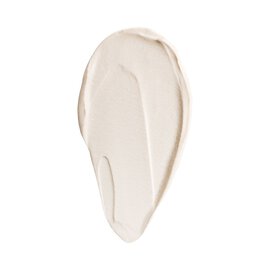
Retinol combinations: what you can and cannot combine it with
Retinol always raises questions at the beginning – it’s normal to have them when you start incorporating it into your skincare routine.
In this article we clarify what our Blue Retinol can be mixed with in a safe way.
In summary: It can be combined with all the moisturizers in Biotherm's Blue Therapy and Blue Peptide line, including all the active ingredients present in them.
Blue Retinol can be combined with our Aquasource moisturizers, Hyalu Plump Gel or Cica Nutri Cream.
Our Blue Retinol is perfect to combine with hyaluronic acid and centella asiatica – active ingredients known for their moisturizing and soothing power.
Let’s learn what else retinol can be mixed with.
What can retinol not be combined with?
Retinol should not be used with exfoliating acids and mechanical exfoliants, especially when the skin is adapting to new products.
Do not combine your retinol with overnight peels. The restorative action on the skin is already sufficient. For example, do not use glycolic acid in the same application as retinol.
Instead, enjoy the regenerative effects of Blue Retinol Night Serum every night with your Blue Therapy Cream – it’s enough for your skin.
Biotherm's formulas are suitable for combination with Blue Retinol
We hope that thanks to this article you will become an expert in the use of retinol. Do not be afraid of it and appreciate that when using retinol, less is more. The greatest advantage offered by Blue Retinol is its bioaffinity thanks to the combination of 0.25% Pure Retinol and 1% Biotech PlanktonTM, which contains 35 nutrients and is considered by scientists as a unique regenerative ingredient in the cosmetic industry.
Biotech PlanktonTM, thanks to this unique bioaffinity property and its regenerative capacity, makes our Blue Retinol Night Serum twice as effective and reduces possible discomfort on the skin.
With all the ingredients that we formulate at Biotherm, it is not just what retinol can be mixed with, but also in what concentration we find these dermatological ingredients or active ingredients.
Blue Retinol goes well with lipids and bioceramides present in moisturizers. For example, the Aquasource Hydra Barrier Cream helps restore the skin barrier.
Here's what retinol can be mixed with and why:
H3: Ceramides and Retinol
You can mix retinol with ceramides.
Ceramides have become a fundamental favorite in all types of face creams – especially those for dry or sensitive skin.
These are lipids found naturally in our skin and whose function is to bind cells together for dehydration and maintain the skin's barrier function.
H3: Shea and Retinol
It may come as a surprise to learn that shea is a natural fat that comes from the nut of the shea tree. In fact, the meaning of the word shea is "butter tree". Of course, you can mix retinol with shea butter creams.
H3: Vitamin E and Retinol
If you are wondering whether it’s possible to mix retinol with vitamin E, the answer is yes. Vitamin E is a powerful antioxidant, present in most Biotherm products.
Vitamin E is a group of vitamins whose main function is to trap free radicals that cause skin cells to weaken.
In short, vitamin E for the skin has made a real difference in the world of cosmetics. For this reason, Vitamin E creams with this antioxidant ingredient are popular as it helps to regenerate our skin.
Hyaluronic Acid and Retinol
Are you unsure which acids can be mixed with retinol?
Our Blue Retinol combines perfectly with the hyaluronic acid in our Life Plankton Regenerating Serum, and with any other moisturizer containing hyaluronic acid.
Using hyaluronic acid in combination with retinol helps to improve hydration and helps to balance the skin barrier. Your complexion will be healthier and more resistant to damage.
H2: Vitamin C and Retinol
Our Blue Retinol combines perfectly with the Vitamin CG in our Life Plankton Regenerating Serum. Just don’t combine it with another serum in the same application.
There is no problem in mixing Blue Retinol with vitamin C in your skincare routine. Reserve the Blue Retinol Night Serum for your evening skincare routine, and use skincare products with Vitamin C in the morning.
If your skin is sensitive during the retinol adjustment period, we advise you to keep it simple and stick to only one or a few products.
With this guide, we hope that you will no longer have any doubts about what retinol can and cannot be mixed with.












